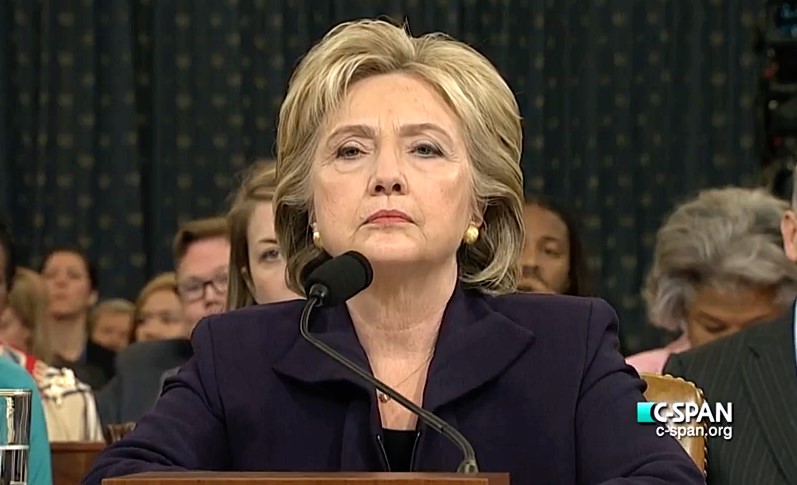Few Americans remember Amelia Bloomer, the fabled feminist who introduced women to the phenomenon of pants. In the 1850s, coinciding with the early American women’s suffrage movement and the Seneca Falls convention, Amelia Bloomer set new standards for women’s fashion, wardrobing the first wave of feminists in her eponymous pants. Women waved goodbye to the long heavy skirts and constricting corsets of yesteryear – they were free to walk, bicycle and perhaps even vote, all while sporting comfortable bloomers. Yet Amelia Bloomer’s is only one story of many in the ongoing struggle between women in politics and their politicized wardrobes.
The road – or rather, the runway – has never been smooth for trendsetters, or any women attempting to enter the political sphere. Ardent opposition greeted the bloomer fad in the mid-nineteenth century, making pants-wearing itself a political statement. Many women wearing bloomers were denied church membership, and newspapers such as Harper’s Monthly and New York Sunday Mercury published demeaning cartoons condemning so-called “bloomerism” and its adherents.
As even the least sartorially-savvy know, trends come nearly as fast as they go, disappearing due to disinterest or in favor of the next hottest trend. Yet for women in politics, criticism of their professional clothing has remained a constant. In the case of bloomers, the very founders of the trend actually actively stifled it after a few years. Ironically, women’s rights activists such as Elizabeth Cady Stanton, Susan B. Anthony, Lucy Stone, and even Amelia Bloomer herself determined that bloomers were in fact detrimental to their suffrage cause. Contrary to the apparent liberation of wearing bloomers, the scandalous pants and the controversy surrounding them created a distraction from women’s efforts to win the right to vote. Thus, in a strategic 180-degree turn, the women readopted typical, more “respectable” fashions, squeezing once more into corsets and the confines of long woolen skirts in order to emphasize their unwavering commitment to the longer political fight over more immediate victories.
This is not an isolated case. Historically, women’s movements have chosen to dress in conventional and conservative attire to reduce public criticism of their movements. A few decades after the bloomer fad blossomed and faded, the suffragettes of the Women’s Social and Political Union (WSPU) in England also utilized conventional feminine fashion to advocate for the right to vote. Despite their militant tactics, which included planting bombs and smashing windows, the WSPU’s leader, Emmeline Pankhurst, mandated that her members dressed in respectably high-collared dresses, girdles, and long skirts. Doing so allowed their politics, rather than appearances, to take center stage, and thus prevented any campaign distractions to be caused by radical attire.
Hillary Clinton, whose name, thoughts, and wardrobe have withstood the political limelight for over two decades, should tip her hat to Ms. Bloomer. Generations after the historical debut of women’s pants, Clinton, too, paved the way for a new fashion statement. Rewind to the 1990s, and Clinton stood as the model of the unforgettable pantsuit, replete with shoulder pads and striking colors. The First Lady became a trendsetter when she first sported pantsuits in the 1990s, which subsequently contributed to the 1993 end of the Senate prohibition of women’s pants. Clinton may have paid homage to this accomplishment by wearing a pantsuit to her 2001 Senatorial swearing-in ceremony.
The question remains to be seen whether Clinton’s reputation as a trendsetter of boundary-breaking attire like the prismatic pantsuit will endure for her remaining political career, or whether it will be ephemeral like the fashion choices of her predecessors. Now that pants are de rigeur, Clinton could continue her pattern of revolutionizing women’s professional wardrobes. But if Clinton’s wardrobe instead safely follows in the footsteps of the nineteenth century suffragists’ goodbye to bloomers, not much will have changed in the intervening century.
Despite the impressive resumes of women in politics like Hillary Clinton, the fraught history of fashion and politics reappears when women are criticized for breaking out of typical female fashion norms. Of course, no one remembers what color tie or style of loafers male politicians have worn, but female politicians as women in the public sphere have always endured undue sartorial scrutiny. Americans may finally be ready for a female president, but perhaps only on the condition of a wardrobe to match.
